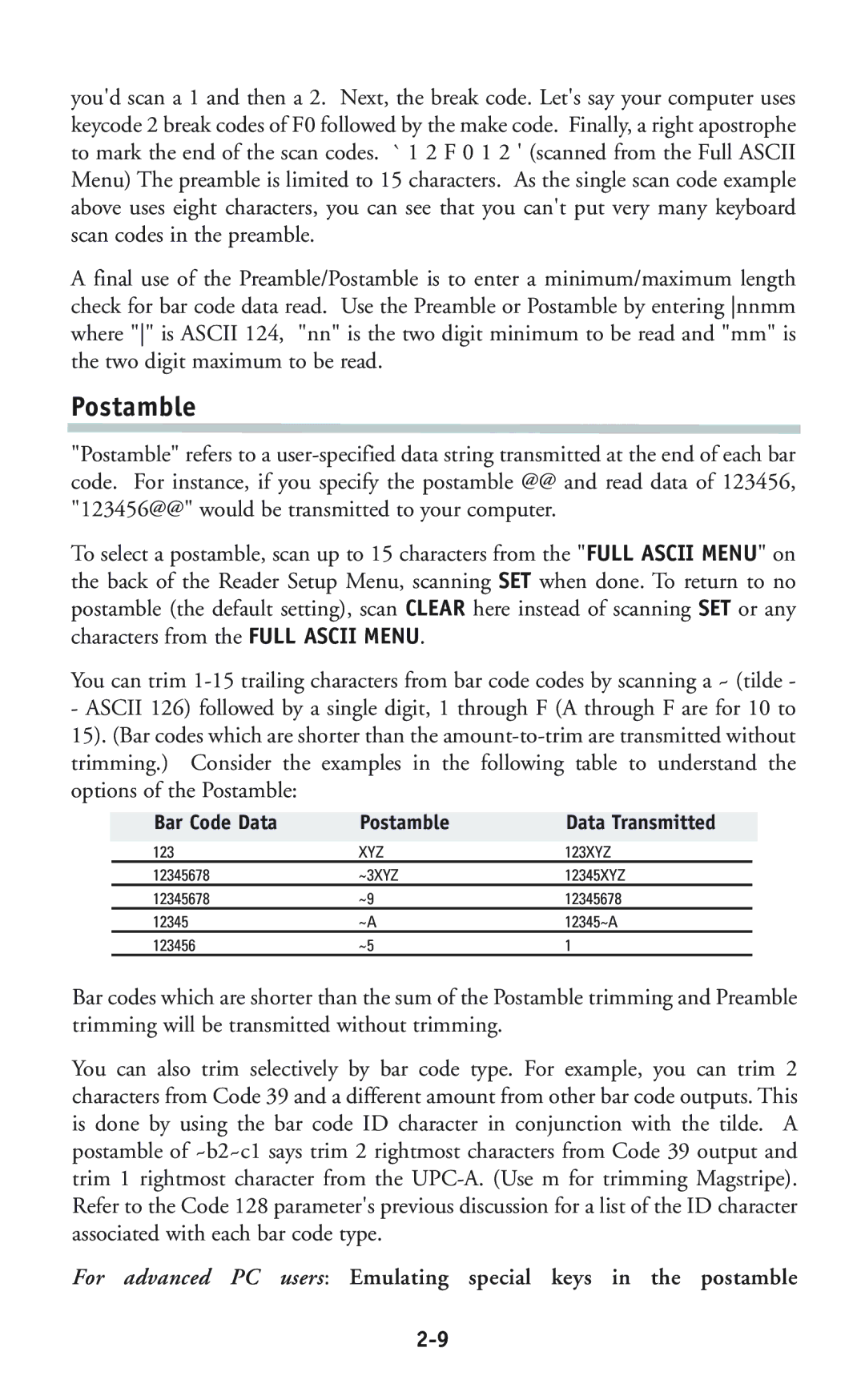you'd scan a 1 and then a 2. Next, the break code. Let's say your computer uses keycode 2 break codes of F0 followed by the make code. Finally, a right apostrophe to mark the end of the scan codes. ` 1 2 F 0 1 2 ' (scanned from the Full ASCII Menu) The preamble is limited to 15 characters. As the single scan code example above uses eight characters, you can see that you can't put very many keyboard scan codes in the preamble.
A final use of the Preamble/Postamble is to enter a minimum/maximum length check for bar code data read. Use the Preamble or Postamble by entering nnmm where "" is ASCII 124, "nn" is the two digit minimum to be read and "mm" is the two digit maximum to be read.
Postamble
"Postamble" refers to a
To select a postamble, scan up to 15 characters from the "FULL ASCII MENU" on the back of the Reader Setup Menu, scanning SET when done. To return to no postamble (the default setting), scan CLEAR here instead of scanning SET or any characters from the FULL ASCII MENU.
You can trim
-ASCII 126) followed by a single digit, 1 through F (A through F are for 10 to 15). (Bar codes which are shorter than the
Bar Code Data | Postamble | Data Transmitted |
|
123 | XYZ | 123XYZ |
|
12345678 | ~3XYZ | 12345XYZ |
|
12345678 | ~9 | 12345678 |
|
12345 | ~A | 12345~A |
|
123456 | ~5 | 1 |
|
Bar codes which are shorter than the sum of the Postamble trimming and Preamble trimming will be transmitted without trimming.
You can also trim selectively by bar code type. For example, you can trim 2 characters from Code 39 and a different amount from other bar code outputs. This is done by using the bar code ID character in conjunction with the tilde. A postamble of ~b2~c1 says trim 2 rightmost characters from Code 39 output and trim 1 rightmost character from the
For advanced PC users: Emulating special keys in the postamble
